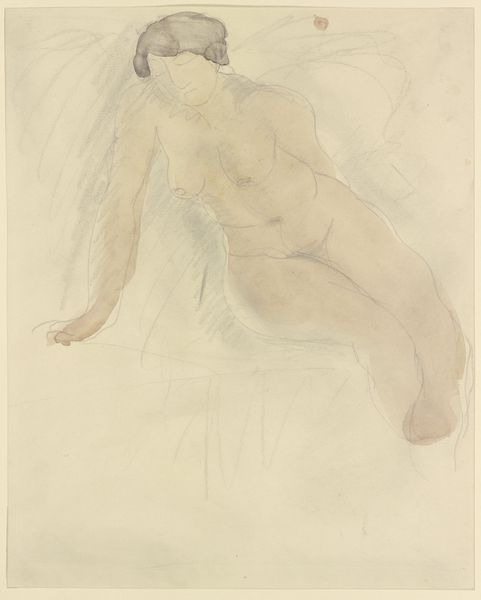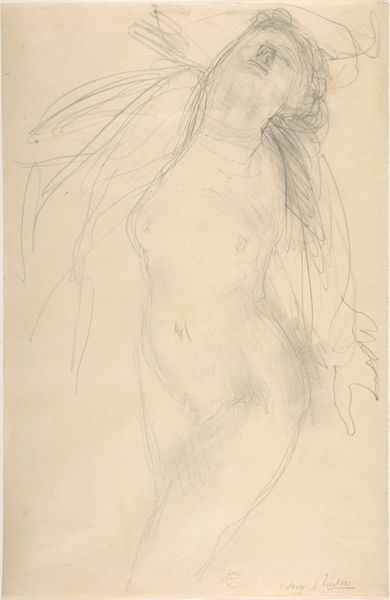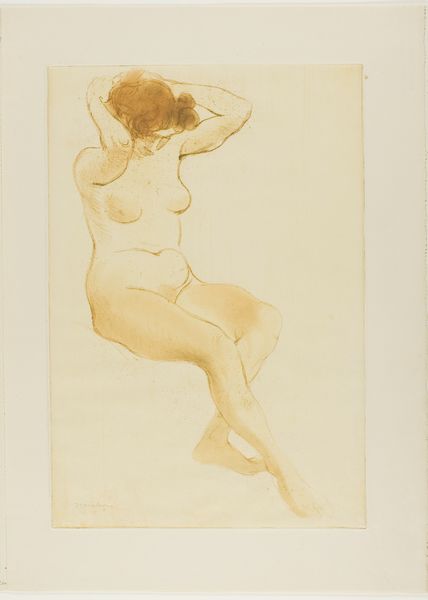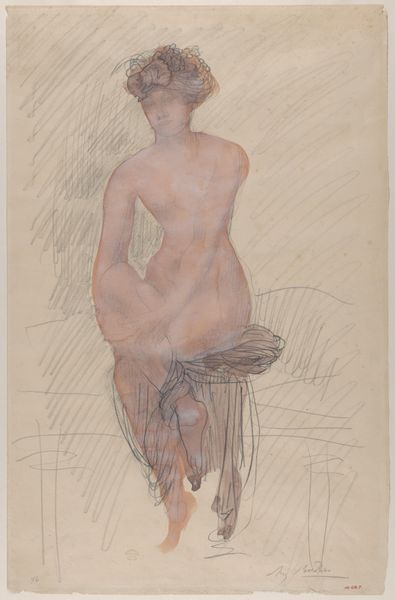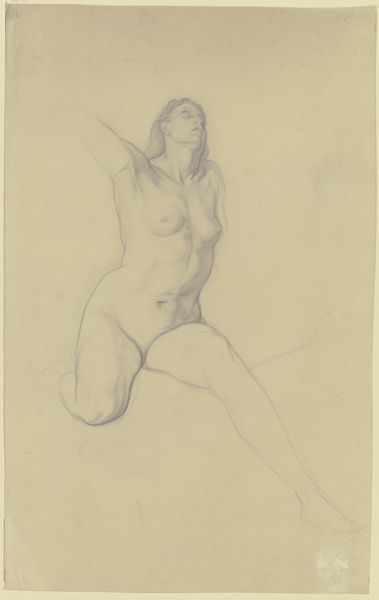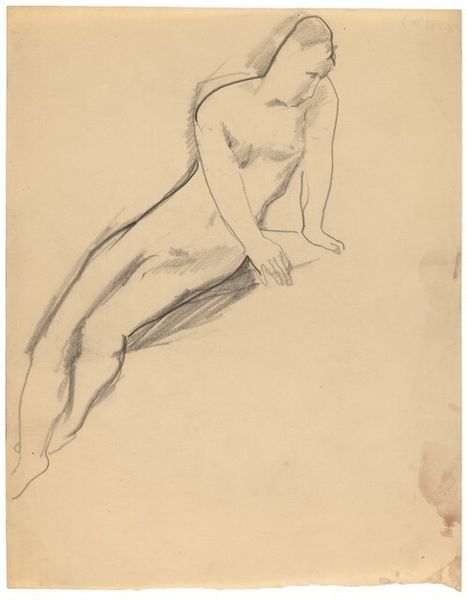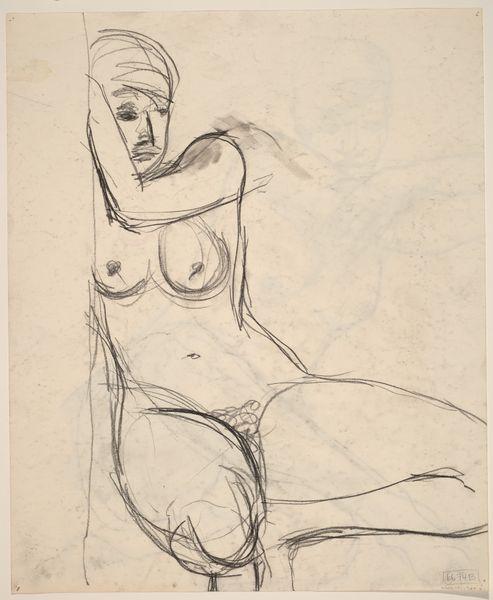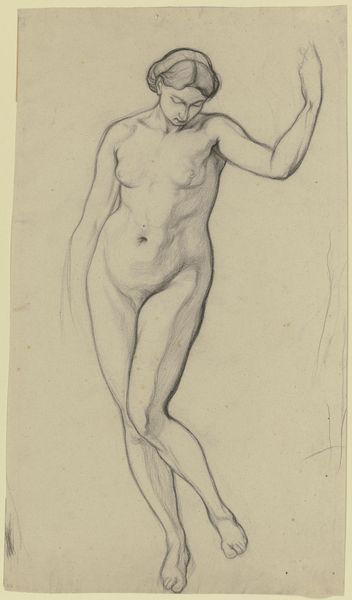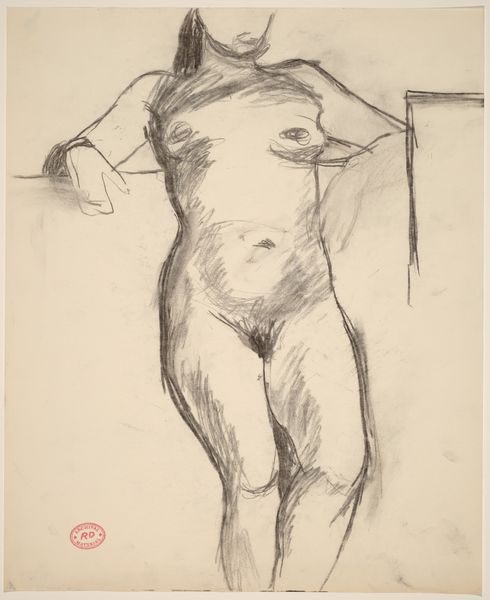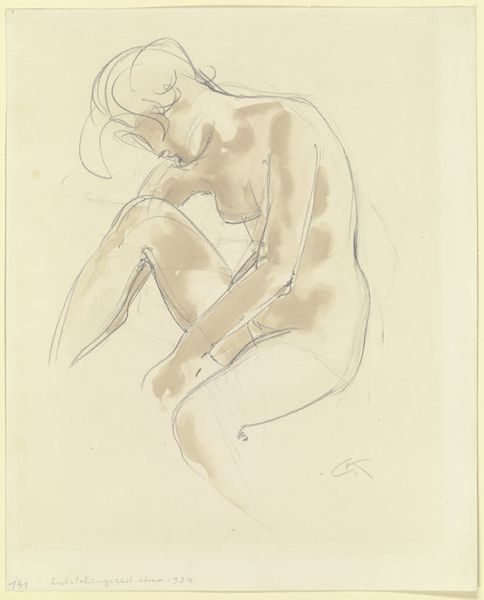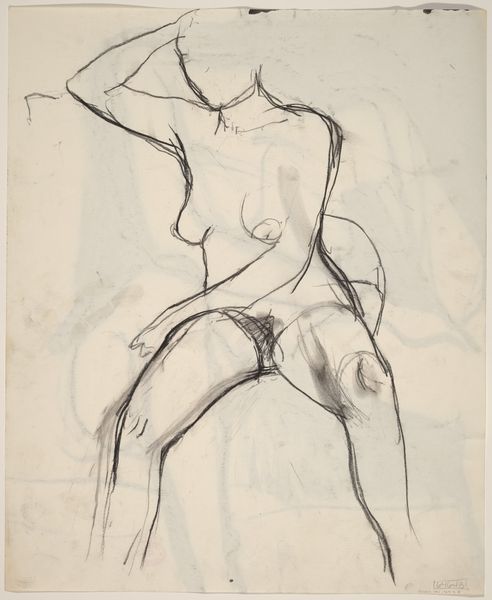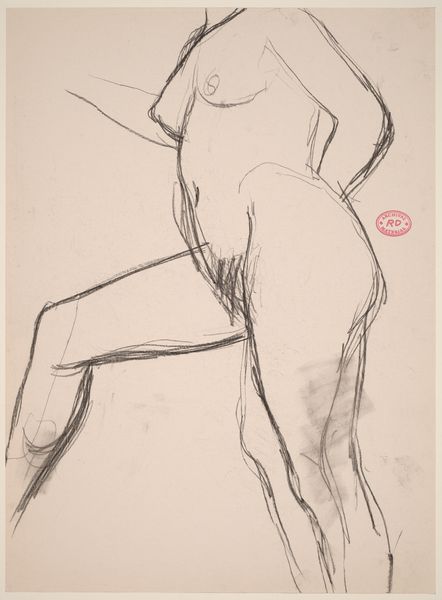
drawing, print, paper, pencil, graphite, charcoal
#
drawing
# print
#
pencil sketch
#
charcoal drawing
#
figuration
#
paper
#
pencil drawing
#
underpainting
#
romanticism
#
pencil
#
graphite
#
charcoal
#
nude
Dimensions: 445 × 317 mm
Copyright: Public Domain
Auguste Rodin sketched this nude figure with draperies using graphite and watercolor on paper. She stands draped in fabric—a visual motif echoing classical antiquity. The flowing drapery, reminiscent of ancient Greek sculptures, harkens back to the idealized human form and the aesthetic values of that era. We find the motif of drapery throughout art history, from the flowing robes of Renaissance Madonnas to the allegorical figures in Baroque paintings. This symbol of modesty and grace can be traced back to religious art, where it signifies purity and virtue. Yet, here, the partial nudity suggests something more complex. The drapery, while concealing, also accentuates the sensuality of the figure. It's a dance between concealment and revelation, a tension that engages our gaze. This interplay speaks to our subconscious understanding of desire and the human form. Consider how the image has resurfaced and evolved over time. From ancient sculptures to Rodin's modern interpretation, the emotional and psychological power of the nude form, draped yet exposed, continues its cyclical journey through art history.
Comments
No comments
Be the first to comment and join the conversation on the ultimate creative platform.
